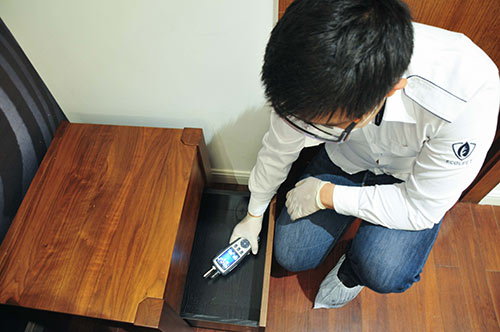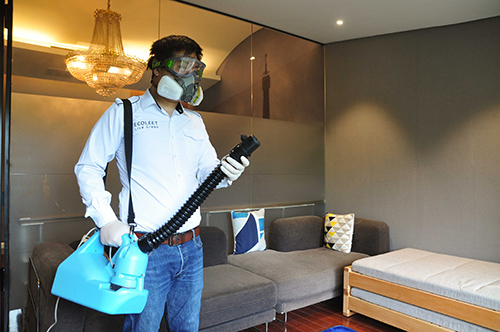HCHO and VOC Treatment
Formaldehyde (HCHO) is a colorless gas with strong pungent smell, which has been identified by World Health Organization and Environmental Protection Agency as a kind of carcinogenic and deforming material, as well as an acknowledged allergen and a potential strong mutagen. According to researches, the formaldehyde in renovation and furniture can release for 3-15 years. The main influences HCHO has on human health are stimulation, allergy, anomalies in smelling, lung function, liver function and immunity function,
Current effective national HCHO test standards related to indoor environment
The national HCHO test standards currently in effect related to indoor environment are:
Code for Indoor Environmental Pollution Control of Civil Building Engineering GB/T 50325-2015
Indoor Air Quality Standard GB/ T 18883-2002
Hygienic Standard for Formaldehyde in Indoor Air of House GB/ T 16127-1995
Guideline for Air Quality Assessment of Passenger Car GB/T 27630-2011
Indoor Environment Quality Evaluation Standard (Exposure Draft)
The indoor HCHO level should be maintained within 0.08 mg/m3-0.1 mg/m3. If there are children or elderlies, we suggest sticking to 0. 08 mg/m3. For commercial sites,0.1mg/m3 bi is recommended.
VOC refers to volatile organic compound, which evaporates in the air under room temperature. VOC includes benzene, toluene, xylene, styrene, formaldehyde, etc. but does not include CH4, CO, CO2 or carbonic acid. TOV refers to the total organics that will be released under certain temperature and certain time.
If VOC concentration exceeds certain level, people will feel headache, nausea, vomit and weak limbs within a short time. If you don’t leave the site immediately, the symptoms will get worse, even causing convulsion, coma or memory loss. VOC causes damages to human liver, kidney, brain and nervous system, even causing blood problems and serious diseases such as leukemia.
The 3 national VOC test standards currently in effect related to indoor environment are:
Code for Indoor Environmental Pollution Control of Civil Building Engineering GB/T 50325-2015
Indoor Air Quality Standard GB/ T 18883-2002
Indoor Decorating and Refurbishing Materials - Limit of Harmful Substances of Interior Architectural Coatings GB/T 18582-2008
Guideline for Air Quality Assessment of Passenger Car GB/T 27630-2011
The indoor VOC level should be maintained under 0.6 mg/m3
With ECOLEET’s HCHO and VOC treating service, we will effectively reduce the HCHO and VOC levels to national standards. Only natural and non-toxic materials are used for HCHO and VOC removal to keep your family from toxic chemicals, harmful pollutants and disgusting smell.
Exclusive materials:
A formula imported from Canada with a mixture of over 300 natural plant extracts and multiple organic active components, specifically developed for decoration odors. The product is non-toxic, stimulation-free and without secondary pollution. It works perfectly in removing HCHO, VOC, odors and bacteria produced in decoration or in cars, with a removal rate of over 90%.
The product is certified by ISO9001:2008, Canada Safety Association (CSA) and Underwriter Laboratories Inc.
 We can help you
We can help you
- Reduce or remove VOC including HCHO, toluene, xylene and dapsone at home, in offices and new vehicles.
- Reduce or remove the concentration and intensity of VOC and HCHO odors.
- Measure the effect of service through real-time monitoring devices.
 No need to worry about
No need to worry about
- Corrsion and discoloration of varnished furniture
- Changes of furniture appearance by chemical agents
- Furniture becoming damp or damaged through unprofessional operations
- Hazards to human health and environment by chemical residues, including allergy symptoms and discomfort
- Secondary pollution caused by chemical residues
- Delay in moving in due to prolonged operation period
- Areas difficult to clean due to no exposure to light
- Inapparent effects and short-term relapses due to lack of continuing effects



















 上海工商
上海工商
 沪公网安备 31011702005051号
沪公网安备 31011702005051号